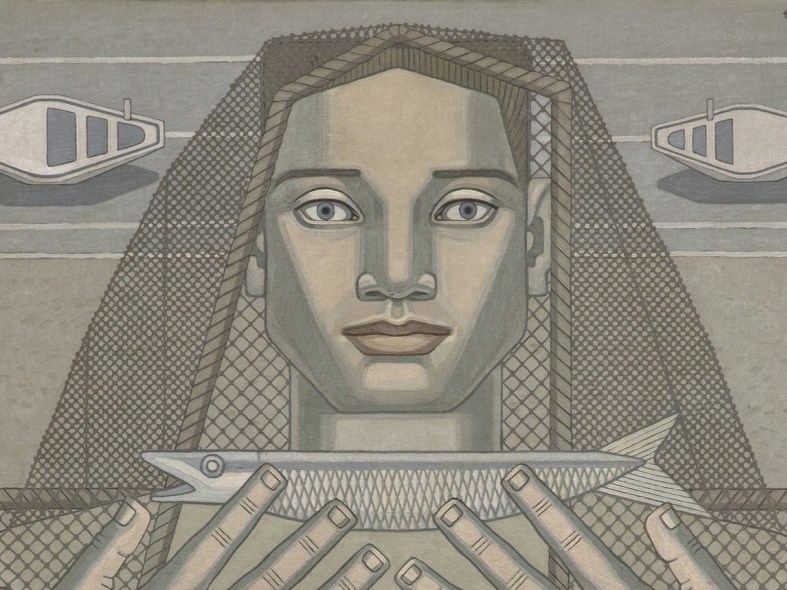
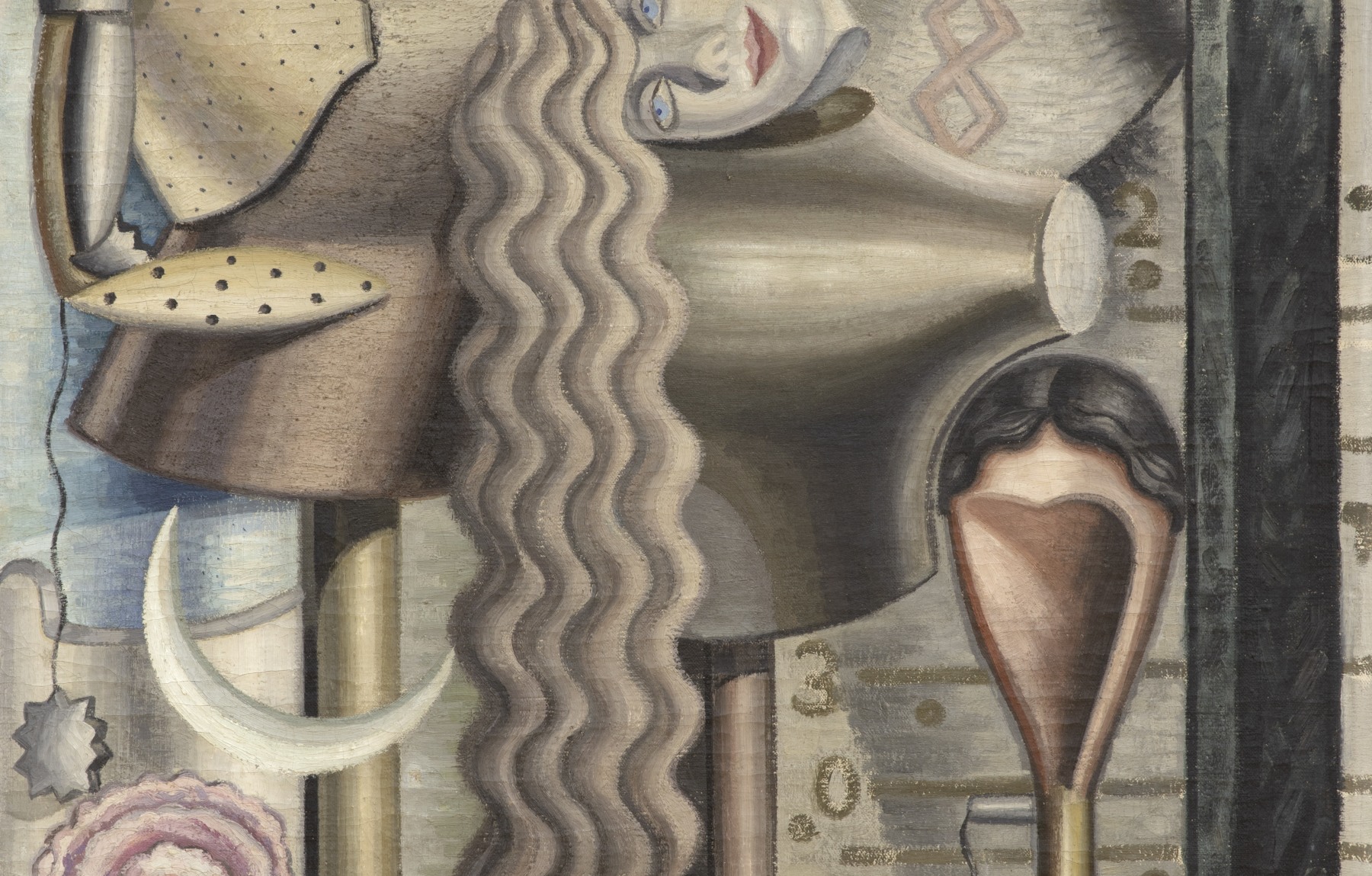
Maruja Mallo’s paintings arrange statuesque figures within abstract and deeply textured landscapes, conveying the vibrant and joyous chaos of 20th century Spanish culture. In her condensed yet tumultuous portraits of urban life, Mallo shows a world turned upside down. The artist weaves together unlikely interactions among diverse groups of people and traditions, transforming city landscapes into sites of subversion where traditional hierarchies of gender and class and “low” and “high” culture are parodied and masqueraded.
Mallo became a central figure in the Generation of 27’, an interdisciplinary group of the Spanish avant-garde that included Surrealist figures like Salvador Dalí, Federico García Lorca, Luis Buñuel and the Spanish philosopher José Ortega y Gasset. After meeting the Uruguayan painter and theorist Joaquín Torres-García in 1933, Mallo’s early Surrealist sensibilities merged with an intensified interest in mathematics, structure and abstraction. This stylistic shift—through which she remained committed to local observation—is exemplified by an increasing concentration on compositional clarity and the symmetrical distribution of forms. Some of her most canonical works, such as Arquitectura Humana / El Pescador (1937) and La Red (1939), emerged in dialogue with Torres-García’s advanced theory of painterly construction. Following the outbreak of the Spanish Civil War in 1936, Mallo soon found herself in exile. As she left Spain, her contemporaries ostracized her from their artistic milieus, an action which would later result in her erasure from many canonical histories of the Spanish avant-garde. The artist’s associations with iconic figures and movements offer an essential perspective for contextualizing Mallo’s artistic practice within broader political and artistic realms.
Maruja Mallo (b. 1955, Vivero Spain; d. 1995) worked and lived between Madrid, Spain and Argentina. She was awarded the Gold Medal of Madrid in 1990 and the Gold Medal of the Xunta de Galicia in 1991. Since her death, she has been the subject of a major retrospective and publication organized by the Casa das Artes, Vigo and the Real Academia de Bellas Artes de San Fernando, Madrid (2010), as well as many solo and group exhibitions. Her work is currently in the collections of the Centre Georges Pompidou, Paris; Fundación José Ortega y Gasset, Madrid; Museo Nacional de Artes Visuales, Montevideo, Uruguay; Museo Nacional de Bellas Artes, Buenos Aires, Argentina. Her work is also in the collection and on permanent view at the Museo Nacional Centro de Arte Reina Sofía, Madrid. A catalogue raisonné of Maruja Mallo’s paintings was published by Galería Guillermo de Osma, Madrid, in 2021.
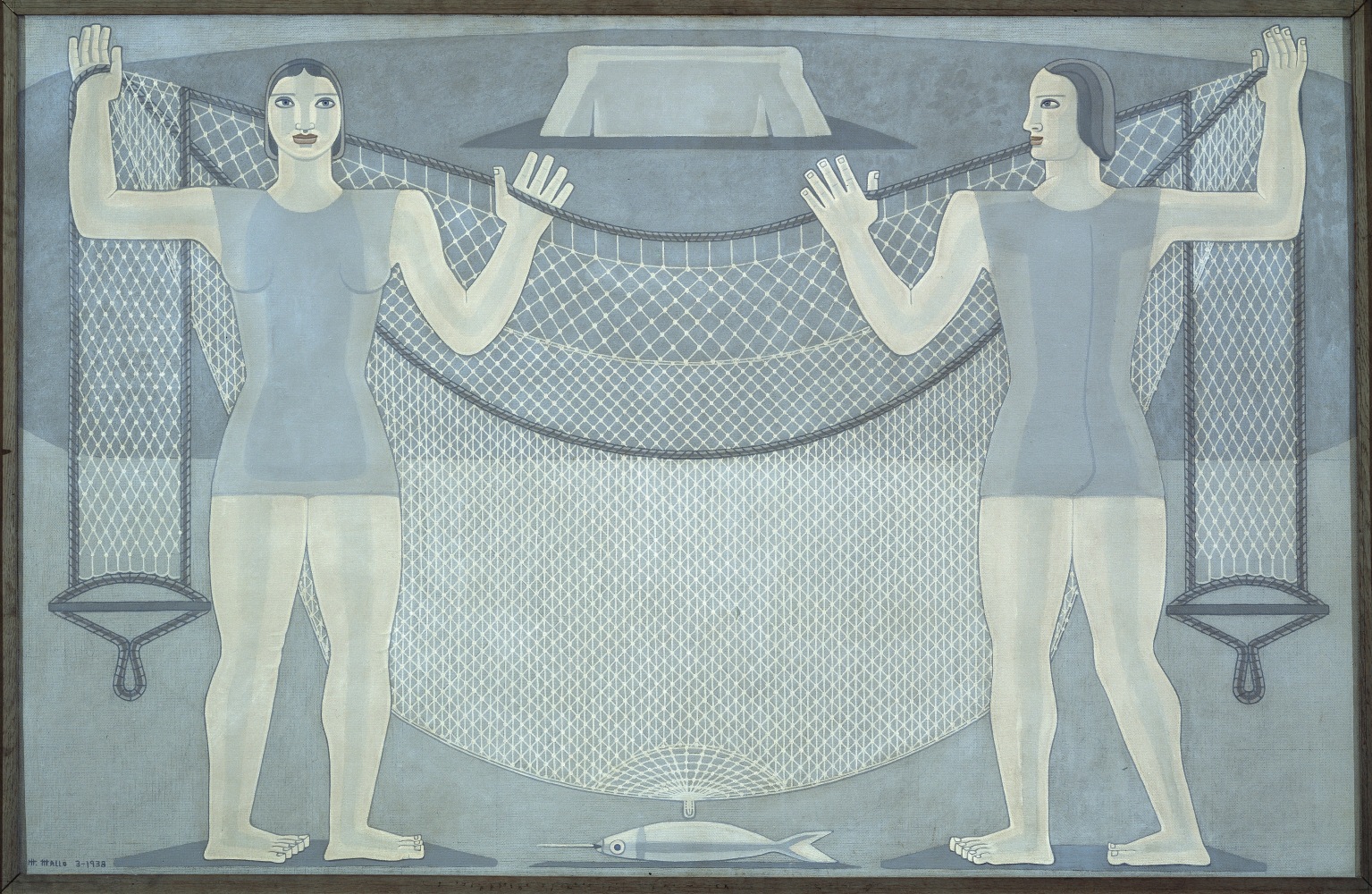
Maruja Mallo, La Red, 1938
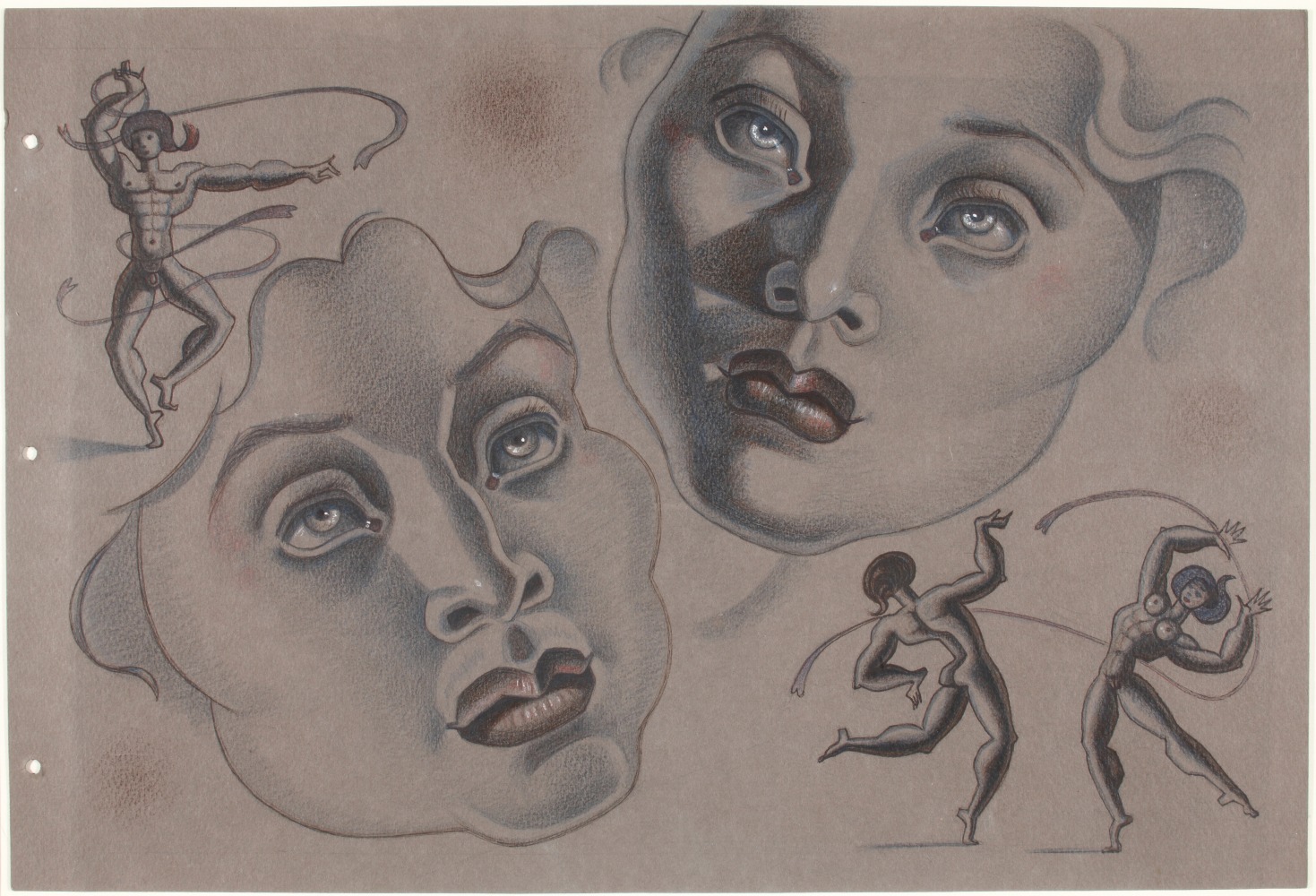
Maruja Mallo, Cabezas y Atletas, ca. 1945
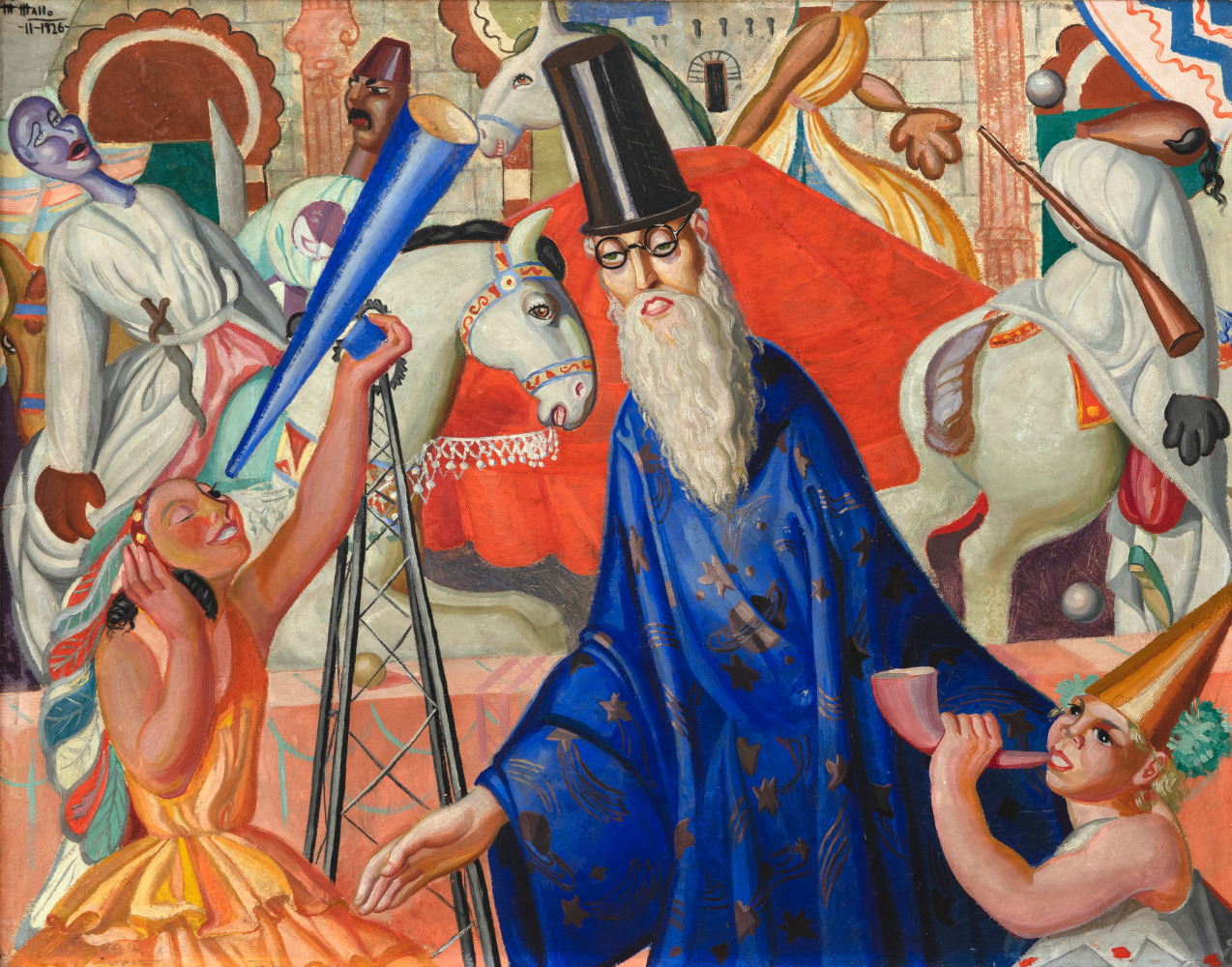
Maruja Mallo, El Mago / Pim Pam Pum, 1926
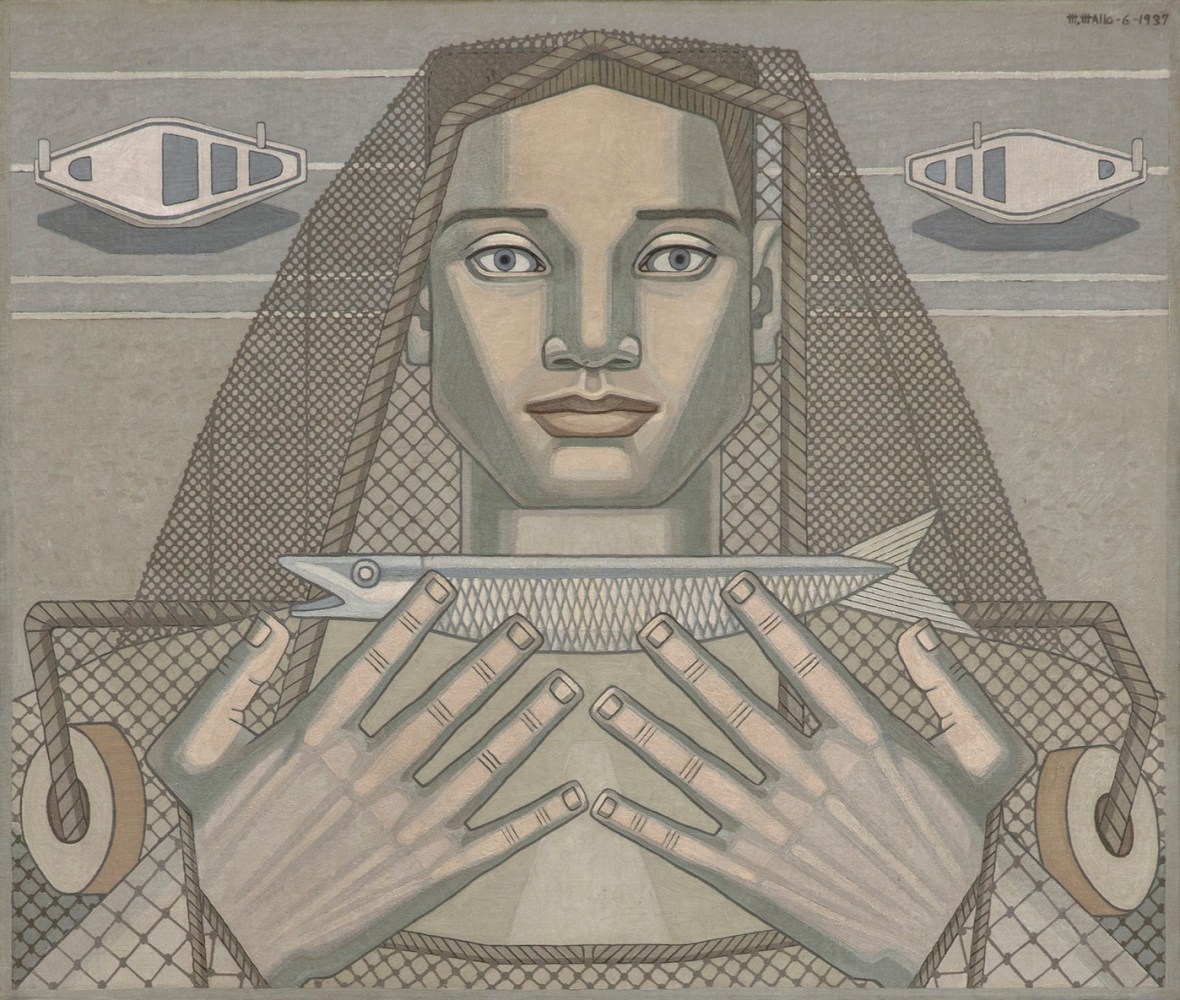
Maruja Mallo, Arquitectura Humana / El Pescador, 1937
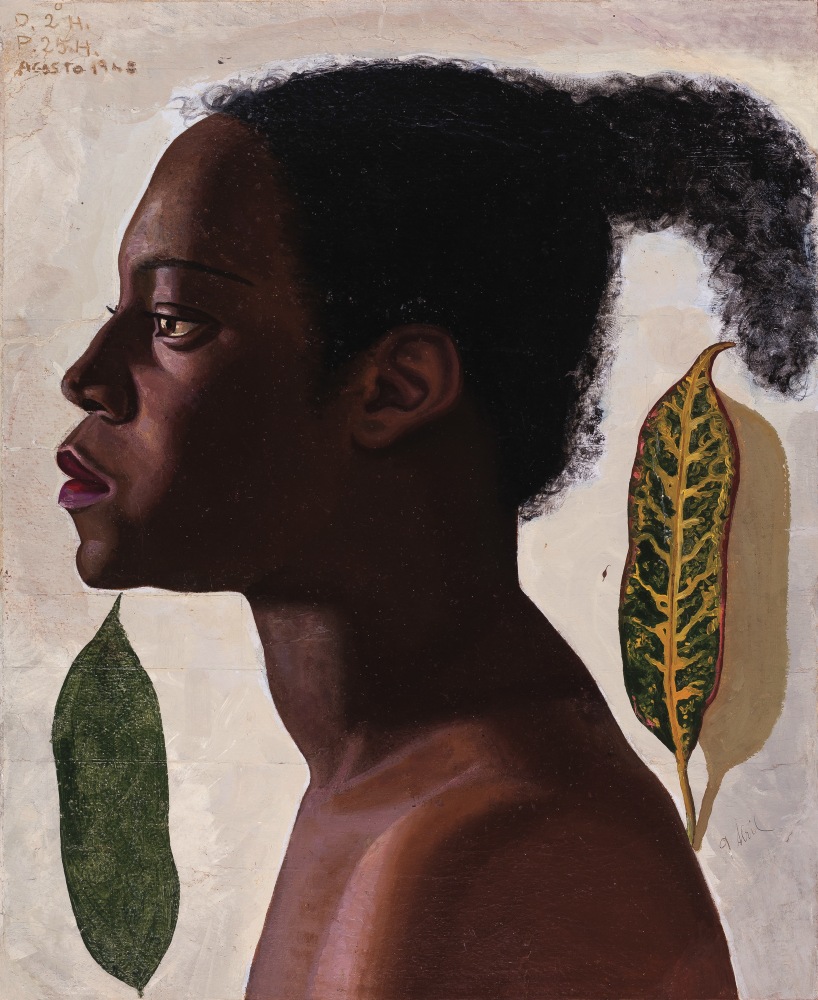
Maruja Mallo, Joven negra, 1948
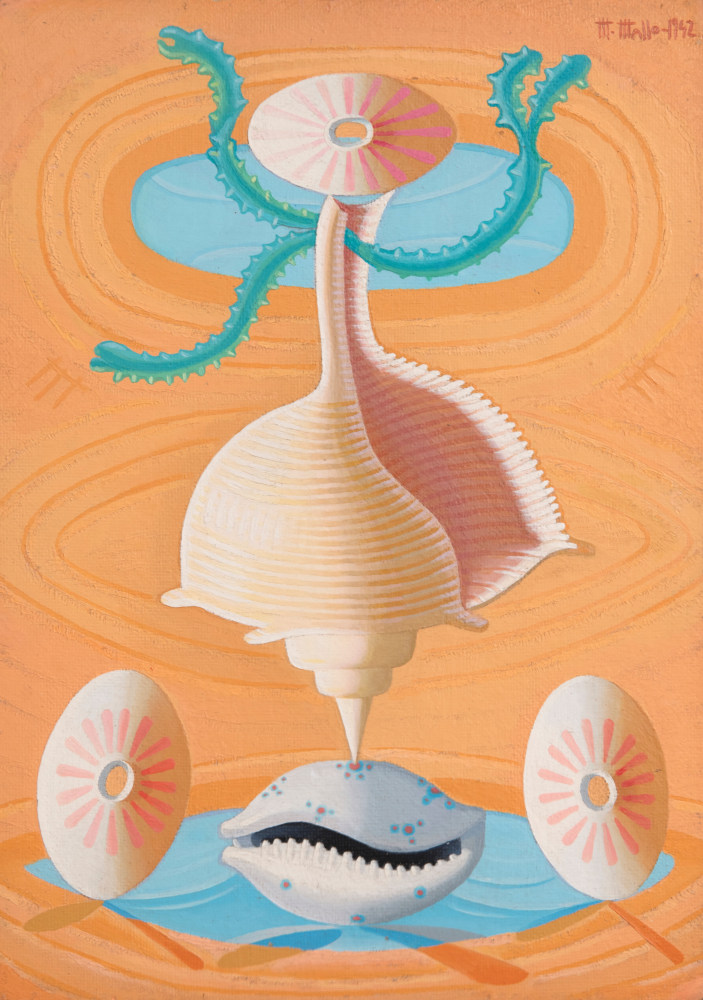
Maruja Mallo, Naturaleza Viva, 1942






